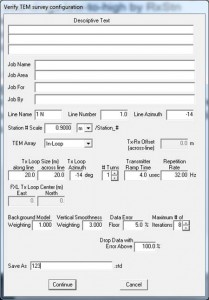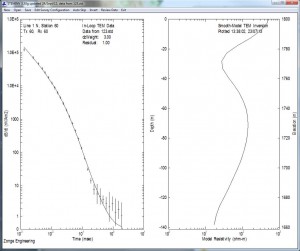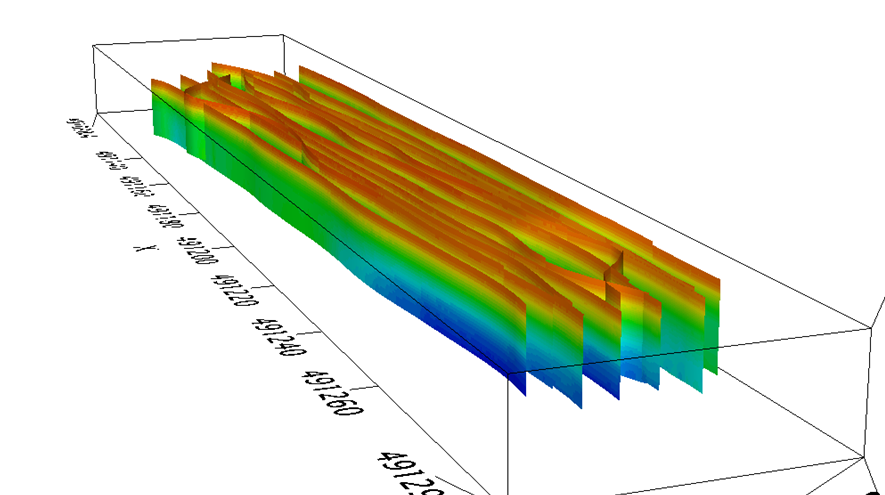Modeling Software Pack for TEM v3.30.g
Smooth-model TEM Data Inversion (STEMINV)
 Smooth-model inversion is a robust method for converting transient electromagnetic (TEM) measurements to profiles of resistivity versus depth.
Smooth-model inversion is a robust method for converting transient electromagnetic (TEM) measurements to profiles of resistivity versus depth.
Observed TEM time and dB/dt magnitude data for each station are used to determine the parameters of a layered-earth model. Layer thicknesses are fixed by calculating source-field penetration depths for each window time. Layer resistivities are then adjusted iteratively until the model TEM response is as close as possible to observed data, consistent with smoothness constraints.
The smoothness constraints limit resistivity variation from layer to layer. The result is a set of estimated resistivities which vary smoothly with depth. more

Examine individual plots for each TEM sounding. Left panel: observed and calculated data are shown in plot of asinh(dB/dt) vs. log(time). Right panel: Modeling results displayed as log-linear plots of smooth-model resistivity vs. depth.
Lateral variation is determined by inverting stations along a survey line. Results for a complete line can be presented in pseudosection form by contouring model resistivities. For contouring, resistivity values are placed at the midpoint of each layer, forming a column below every station. The columns form an array that represents a cross-section of model resistivity.
Inverting window magnitude data to smoothly-varying model resistivities is an effective way to display the type of information inherent in TEM measurements. Smooth-model inversion does not require any a priori estimates of model parameters. The data are automatically transformed to resistivity as a function of depth. Models with smoothness constraints complement more detailed models with geologic information.
Forward Layered-earth TEM Response (TEM1D)
in a large, rectangular transmitter loop placed on
the earth’s surface. Three-component transient responses are calculated as time-domain voltages
In-loop TEM 1D Inversion (TCINV)
an iterative inversion algorithm which constrains changes to layered model parameters while minimizing the difference between observed and calculated data. The forward modeling routine calculates the transient fields excited by a ramped
Utilities provided with TEM modeling programs
- TEMTRIM Utility Program for Skipping Noisy Data in TEM Sounding Curves
- MODSECT Color-Filled-Contour Plots of Inversion-Model Sections
- MAPDAT Interpolation to Plan-Map Data file


